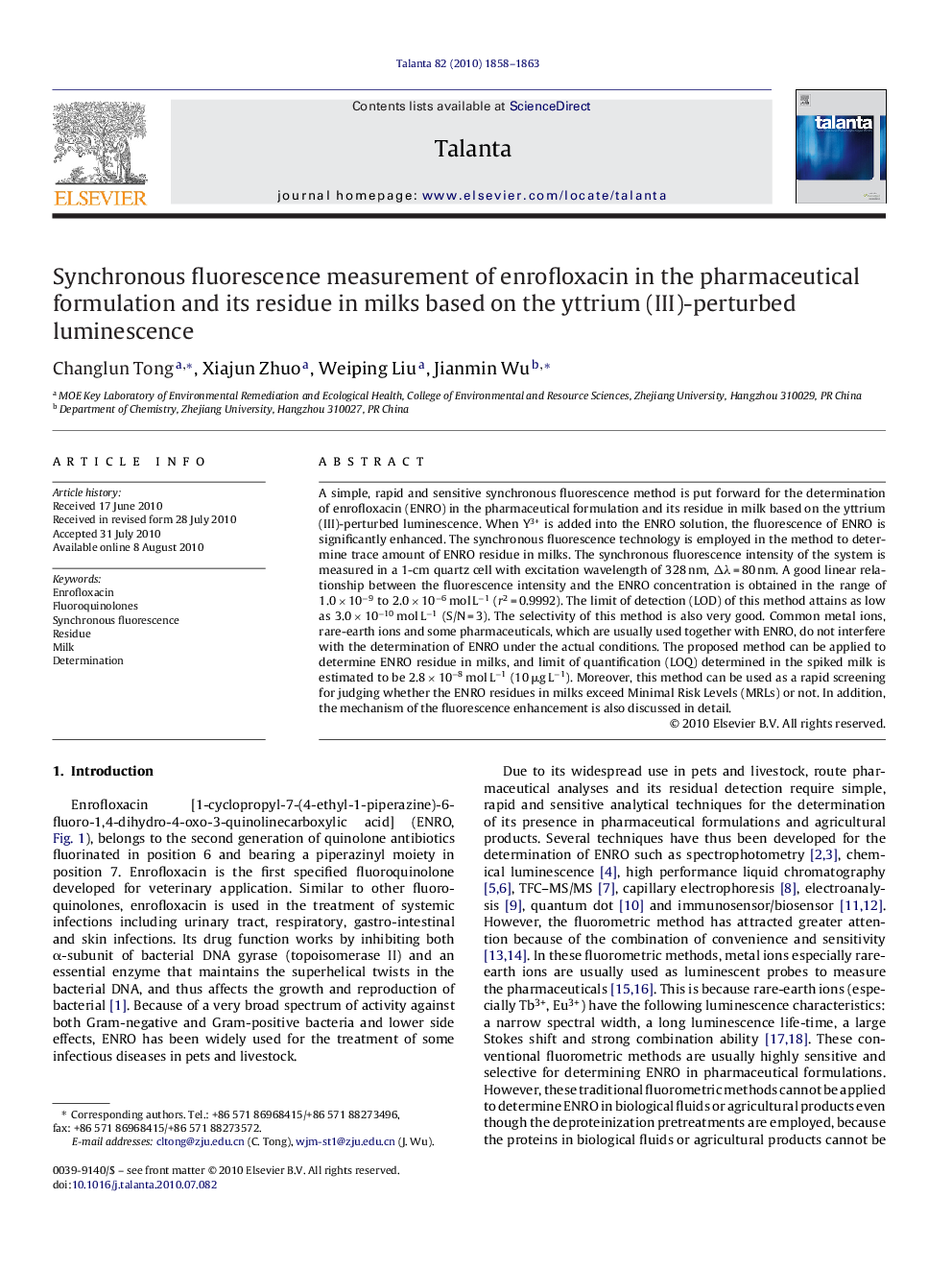| کد مقاله | کد نشریه | سال انتشار | مقاله انگلیسی | نسخه تمام متن |
|---|---|---|---|---|
| 1246211 | 969747 | 2010 | 6 صفحه PDF | دانلود رایگان |

A simple, rapid and sensitive synchronous fluorescence method is put forward for the determination of enrofloxacin (ENRO) in the pharmaceutical formulation and its residue in milk based on the yttrium (III)-perturbed luminescence. When Y3+ is added into the ENRO solution, the fluorescence of ENRO is significantly enhanced. The synchronous fluorescence technology is employed in the method to determine trace amount of ENRO residue in milks. The synchronous fluorescence intensity of the system is measured in a 1-cm quartz cell with excitation wavelength of 328 nm, Δλ = 80 nm. A good linear relationship between the fluorescence intensity and the ENRO concentration is obtained in the range of 1.0 × 10−9 to 2.0 × 10−6 mol L−1 (r2 = 0.9992). The limit of detection (LOD) of this method attains as low as 3.0 × 10−10 mol L−1 (S/N = 3). The selectivity of this method is also very good. Common metal ions, rare-earth ions and some pharmaceuticals, which are usually used together with ENRO, do not interfere with the determination of ENRO under the actual conditions. The proposed method can be applied to determine ENRO residue in milks, and limit of quantification (LOQ) determined in the spiked milk is estimated to be 2.8 × 10−8 mol L−1 (10 μg L−1). Moreover, this method can be used as a rapid screening for judging whether the ENRO residues in milks exceed Minimal Risk Levels (MRLs) or not. In addition, the mechanism of the fluorescence enhancement is also discussed in detail.
Journal: Talanta - Volume 82, Issue 5, 15 October 2010, Pages 1858–1863